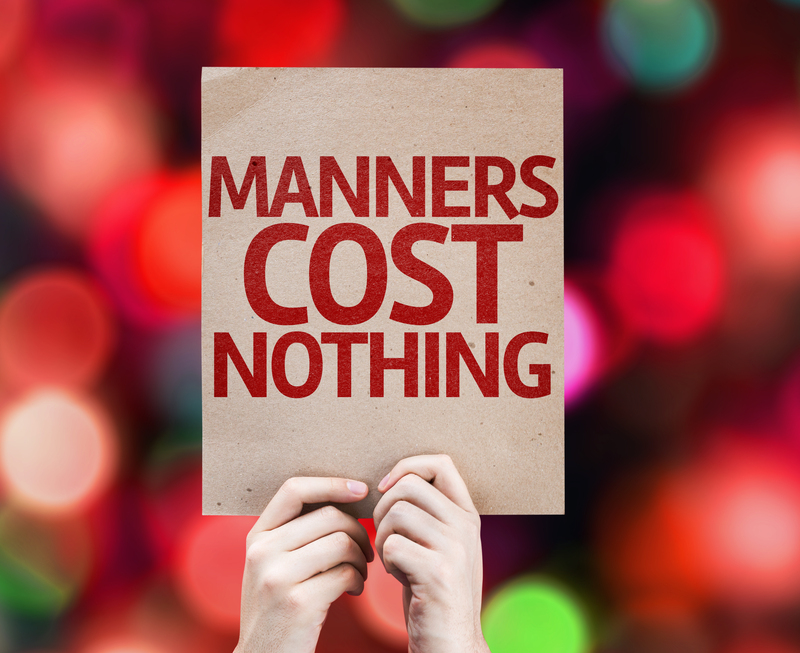Piano Relocation: Challenges and When to Hire Help
Posted on 14/06/2025
Piano Relocation: Challenges and When to Hire Help
Relocating a piano is a task far more complex than moving average household furniture. Whether you're an avid musician, a music teacher, or simply a proud piano owner, understanding the intricacies of piano relocation can save you from costly mistakes, emotional stress, and potential injuries. In this comprehensive guide, you'll discover the key challenges of moving your cherished instrument and when it's prudent to hire professional piano movers.

Understanding the Complexity of Piano Moving
Pianos are not only heavy and bulky; they're also intricate and highly sensitive musical instruments. Moving a piano is not just about ensuring it gets from point A to point B, but also about safeguarding its interior mechanisms and exterior beauty.
Why is Relocating a Piano So Difficult?
- Weight and Size: Pianos range from 300-pound uprights to over 1000-pound concert grands.
- Delicate Internal Parts: A piano's soundboard, strings, and action are easily damaged by impact or improper handling.
- Irregular Shape: The legs, pedals, and lid make gripping and lifting awkward, increasing the risk of dropping or scraping.
- Unique Center of Gravity: The weight distribution in pianos is uneven, often top-heavy or rear-heavy, contributing to tipping hazards.
Many underestimate the precision required in piano transportation. Merely possessing a furniture dolly or a few strong friends is rarely sufficient.
Types of Pianos and Relocation Considerations
The specific method for moving a piano depends on its type as well as environmental factors. Here are the main types and their particular challenges:
Upright Pianos
- Weight: 300-600 pounds
- Dimensions: Tall, with a narrow depth, making it difficult to maneuver through doorways or tight spaces
- Major Challenges: The cast iron plate and soundboard make them top-heavy; tipping can lead to catastrophic damage.
Grand Pianos
- Weight: 500-1200 pounds
- Dimensions: Length can reach up to 9 feet
- Major Challenges: Require partial disassembly, including the removal of legs and pedals. Size complicates stair or elevator transport.
Digital Pianos
- Weight: 20-100 pounds (on average)
- Dimensions: Generally more compact, but certain models (stage pianos with stands) can be awkward to carry.
- Major Challenges: Electronic components are shock-sensitive and should be protected from static and impact.
The risk of irreparable damage is heightened for acoustic instruments, especially antique, baby grand or concert grand pianos.
Common Challenges in Piano Relocation
Relocating a piano presents unique moving challenges that go beyond what most people expect. Understanding these obstacles is vital for planning a successful move.
Navigating Stairs and Tight Spaces
Stairs, narrow hallways, or small elevators are among the toughest barriers to safe piano moving. The risk of injury to both movers and the piano itself increases exponentially.
- Stair Navigation: Requires advanced planning, specialized equipment, and expert teamwork.
- Clearance Issues: Tight corners or low ceilings can force improper tilting or carrying, risking frame or finish damage.
Protecting Floors and Walls
A dropped or dragged piano can easily gouge hardwood, tear carpets, crack tiles, or scuff and dent walls and doorframes.
- Proper Padding: Thick blankets, pads, and protective barriers are essential.
- Moving Boards: A piano skid board or dolly is used to distribute the weight and ease rolling.
Weather Conditions
Moisture, humidity, or extreme temperature changes can damage wood, felt, and strings.
- Humidity Protection: Movers may wrap the piano in plastic covers for rainy days.
- Temperature Changes: Gradual acclimatization is necessary to prevent tuning instability and cracks.
Securing the Piano for Transit
Safe piano relocation always involves immobilizing all moving parts to prevent internal and external damage.
- Lid and Key Cover: Must be locked or secured to avoid accidental opening.
- Pedals and Legs: Disassembled (for grands) and individually wrapped.
- Internal Parts: Movers avoid excessive vibration or shock, which can unseat hammers or misalign strings.
The Risks of DIY Piano Moving
The temptation to save on costs by moving your piano yourself is understandable, but the risks far outweigh any potential savings.
- Physical Injury: Pianos cause severe strains, back injuries, crushed fingers, and worse if mishandled.
- Instrument Damage: Dropping or tilting can split soundboards, break strings, jam actions, or destroy the exterior finish.
- Property Damage: Walls, doors, banisters, and floors can suffer thousands in repair costs.
- Insurance Issues: Most homeowner's insurance does not cover self-inflicted piano damage during a move.
Even with helpers, without training and specialized piano moving equipment, a DIY move puts both the piano and those relocating it at significant risk.
Specialized Equipment for Safe Piano Relocation
Professional piano movers rely on specific tools designed to safely support the instrument's weight and shape:
- Piano Dollies & Skid Boards: Heavy-duty wheeled platforms and padded boards tailored to piano sizes and shapes.
- Straps & Harnesses: Heavy-duty moving straps distribute weight and maintain control throughout stairs, turns, and loading.
- Protective Padding: Thick moving blankets, corner pads, and shrink wrap shield delicate finishes from scratches and dents.
- Disassembly Tools: Movers remove and label parts like legs and pedals, then reassemble at the new location.
Just as important, professional movers have the training to use these tools correctly, ensuring a far safer move than amateur attempts.
When Should You Hire Professional Piano Movers?
Sometimes, it is possible to relocate a simple digital piano or lightweight upright with sufficient manpower and preparation. However, there are clear situations when expert help is essential.
Signs You Need Professional Piano Relocation Services
- Stairs are Unavoidable: If your move involves even one flight of stairs, professional movers are strongly recommended.
- Grand Pianos: Disassembly and reassembly should only be attempted by trained specialists.
- Long-Distance Relocation: Professional movers have climate-stable trucks and insurance for interstate or international piano transportation.
- Lack of Proper Equipment or Experience: If you don't have dollies, skid boards, or prior experience, hire help.
- High-Value or Antique Pianos: The risk to sentimentally or financially valuable instruments is not worth DIY savings.
If your situation checks any of the above boxes, searching for "piano movers near me" or "professional piano relocation services" is the smart move.
How to Choose a Reliable Piano Relocation Company
Not all moving companies have the specialization or insurance required to properly relocate pianos. Here's how to find the right team.
Key Qualities of a Great Piano Mover
- Proven Experience: Ask about years of specialized piano moving, not just general moving services.
- Proper Insurance: Full coverage for both property and instrument damage.
- Training and Certification: Staff should be trained in piano-specific moving techniques and equipment.
- Customer Reviews: Look for testimonials that specifically mention piano moves, not just general satisfaction.
- Transparent Pricing: Estimates should be based on type of piano, distance, stair requirements, and special needs.
Always confirm that your chosen piano mover will guarantee safe delivery and provide a clear plan for both pickup and delivery at your new location.
What to Expect from Professional Piano Movers
A reputable piano relocation service handles your instrument with utmost care, from initial inspection to final placement and tuning recommendations after delivery.
- Pre-Move Inspection: Assess the piano, routes, and potential obstacles.
- Safe Disassembly: If necessary, remove pedals, legs, or other components with labeling and protective wrapping.
- Securing and Padding: Wrap all surfaces and moving parts to prevent cosmetic and mechanical damage.
- Controlled Movement: Use of dollies, boards, and trained manpower for careful navigation of stairs and corners.
- Safe Vehicle Loading: Climate controlled interiors, using straps and shock-absorbing mounts.
- Reassembly and Placement: Careful reattachment of parts and precise placement at destination.
- Tuning Recommendations: Most professionals suggest waiting a few weeks post-move before tuning, to allow for full acclimatization.
Their expertise maximizes safety and peace of mind, greatly reducing risk of loss or serious damage.

Frequently Asked Questions about Piano Relocation
How much does it cost to move a piano?
Factors like type of piano, stairs, distance, and urgency all affect cost. Local upright piano moves may range from $200-$500, while grand pianos or long-distance moves can run $1,000 or more.
Can all movers relocate pianos?
No! General movers may lack needed expertise and equipment. Always hire certified piano relocation services.
Should I tip piano movers?
Tipping is customary, usually $20-$40 per mover depending on the move's complexity and your satisfaction.
Will moving affect my piano's tuning?
Yes. Vibrations, temperature, and humidity shifts can disrupt tuning. Most technicians recommend waiting two to four weeks after the move for the instrument to settle before scheduling a tuning.
Conclusion: Protecting Your Piano During Relocation
Piano relocation is never a routine task--it is a specialized process requiring skill, planning, and care. Understanding the challenges inherent to piano moving is critical to protecting your instrument, your home, and yourself. While some moves may appear manageable, DIY relocation often opens the door to expensive, lasting damage or personal injury.
The wisest course for most piano owners, especially with staircases, grand pianos, or valuable instruments, is to entrust the move to professional piano movers. Their expertise, equipment, and insurance give you confidence that your cherished piano will arrive safely, ready to fill your new space with music.



